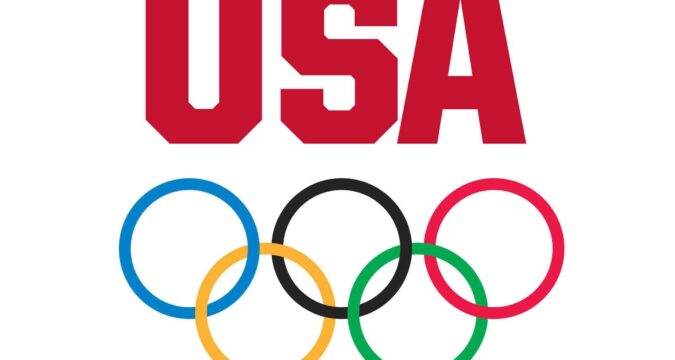
By Allen Smith
Well folks, the time is almost here. This Friday and Saturday, April 19 & 20, the process for determining the USA wrestlers that will represent our country at the Paris Olympics takes a major step forward.
I must admit, for me personally and for most of my wrestling friends, the sport of freestyle wrestling has enjoyed an increase in fanship that is quite remarkable. Most still enjoy folkstyle more, but have latched onto freestyle in increasing numbers. I credit the success of the Nittany Lion Wrestling Club, but also the rule changes of the past 20+ years that have made international freestyle wrestling easier to understand. Greco-Roman will also be contested this weekend, but has not enjoyed the success of both Men’s and Women’s Freestyle.
Provided here is information on a number of topics. I’ll apologize in advance for the length, my hope being that at least a few of the topics are of interest for each of you.
OLYMPIC QUALIFYING
The United States HAS NOT YET QUALIFIED TWO OF THE SIX WEIGHTS IN MEN’S FREESTYLE (57kg and 65kg), and three of the six weights in Greco-Roman. Women’s Freestyle has already qualified all six of their weights!! Even so, the Olympic Trials this weekend are of enormous value for the unqualified weights. There is one tournament left, the WORLD OLYMPIC GAMES QUALIFIER, held in Istanbul, Turkey on May 9-12. The top three finishers in each weight class at that tournament earns their country a spot at the Olympics. Countries, at weights they are already qualified (such as 74kg, 86kg, 97kg and 125kg for the USA), CANNOT send representatives. I will do my best to keep you informed when that competition is held.
OLYMPICS HISTORY
Sadly, Olympic Wrestling consists of only six Men’s Freestyle weight classes while the World Championships in non-Olympic years contain ten. Most of you know the history generally, but here’s some detail;
1948-1968: 8 Men’s Freestyle and 8 Greco-Roman weight classes
1972-1996: 10 Men’s Freestyle and 10 Greco-Roman weight classes
2000: 8 Men’s Freestyle and 8 Greco-Roman weight classes
2004-2012: 7 Men’s Freestyle, 7 Greco-Roman and 4 Women’s Freestyle weight classes
2016-Present: 6 Men’s Freestyle, 6 Greco-Roman and 6 Women’s Freestyle weight classes
Much has been written about these changes, especially during the last 11 years, when wrestling was removed from the Olympics, only to be temporarily reinstated for 2020 and 2024. I should note that this is not permanent reinstatement, as it was not one of the 25 ‘core sports’ that were approved by the IOC in 2013. That is a story for another day.
The United States leads all countries in the all-time medal count when considering all three disciplines. However, if one considers Russia plus the Soviet Union (they are listed separately) the USA would be second. With only 15 medals all-time in Greco-Roman though, it means that the USA has a commanding lead for the freestyle disciplines (Men’s and Women’s combined).
RULES and RULE CHANGES
I mentioned earlier that rule changes, especially over the past 20 years or so, have made freestyle wrestling a far more enjoyable watch. There was a time when freestyle consisted of three two-minute periods, with scoring starting over at each period, and the winner had to win the “best-of-three” periods. The action was really hard to follow, and scoring could be a nightmare for average fans. Scandals (bribes, etc.) also reared its ugly head at times. Within the past several weeks, Olympic bronze medalist Frank Chamizo claimed he turned down a bribe of $300,000 to deliberately lose a match at last week’s European wrestling Olympic qualification tournament in Baku, Azerbaijan. Heaven only knows how that will play out, but it shows that the unsavory side of sport is still with us. From a distance, wrestling does appear to be “cleaner” than I remember from my early adult years and sometime after.
As far as today’s rules, here’s a few hints for watching freestyle;
— A “pushout” earns a point for the wrestler that forces their opponent to touch the out-of-bounds area first. A exception is if a wrestler is “grounded”, meaning on his knees as they are being pushed out.
— A “takedown” (2 points) should be very familiar, as it is the most common thing to folkstyle. Just remember, in freestyle the takedown won’t be awarded if a wrestle is in what is called a “quad-pod” position (both hands and both feet on the mat), until a knee or elbow or some other body part touches the mat.
— A takedown with back exposure is a four-point move, two for the takedown and two for the back exposure. Different than folkstyle, this “back exposure” can be as simple as a roll through, no need to hold an opponent in a position for any length of time.
— Leg laces, chest wraps, head pinch, gut wrench and more!! Hardly terms we hear in folkstyle, these are the names of some of the techniques used to get back exposures. Each back exposure (less than 90 degrees) is worth two points. In folkstyle, the wrestler must be held in position from 2-5 seconds to get back points. Much different in freestyle!! And in freestyle, technical superiority can be earned rather quickly with consecutive rolls for any of the noted techniques.
— Falls in freestyle I would classify as “touch” falls. No need to hold your opponent for at least one second, falls in freestyle are called when criteria is met for even a fraction of a second.
— Technical superiority will end a match after a 10-point advantage is earned in freestyle and an 8-point advantage is earned in Greco-Roman.
— Hope that helps, even if it is just a little. Knowing the rules makes for more enjoyable viewing!
Penn State and NLWR Connections
How many wrestlers from the NLWC and/or with Penn State connections will be representing the United States at the Olympics? Good question. There’s a bunch of guys wrestling this weekend with that as their dream. Listed below, by weight, are the Men’s Freestyle competitors with the connection noted, with their pre-seed for the challenge tourney next to their name;
57kg
Thomas Gilman (#2)
Nico Megaludis (#5)
Luke Lilledahl (#9)
65kg
Nick Lee (#1)
Beau Bartlett (#5)
Zain Retherford sits in the semifinals, courtesy of his World Championship Gold at 70kg
74kg
Jason Nolf (#2)
Mitchell Mesenbrink (#5)
Vincenzo Joseph (#7)
Alex Facundo (#9)
Levi Haines (#10)
Kyle Dake sits in the Championship Series (finals) due to his 2023 World Medal at 74kg.
NOTE: With Keegan O’Toole dropping out, it is likely everyone from the #4 seed down will advance one seed.
86kg
Aaron Brooks (#1)
Mark Hall (#5)
Carter Starocci (#6)
Max Dean (#7)
Connor Mirasola (#9)
David Taylor sits at the Championship Series, due to winning a World Medal at 86kg
97kg
Kyle Snyder sits at the Championship Series, due to winning a World Medal at 97kg
125kg
Greg Kerkvliet (#3)
That’s all for now. We are truly blessed to have the Olympic Team Trials local to the State College area. I know this wrestling community, and it will do what’s necessary to be the best host possible. Hope to see many of you there, but if you can’t make it, here’s some additional schedule info;
- Friday, April 19: Challenge Tournament preliminaries, quarterfinals and consolations, 10 a.m.; Challenge Tournament semifinals and finals, 6:30 p.m.
- Saturday: Championship Series (rounds 1 and 2) and Challenge Tournament consolations and third-place matches, 10 a.m.; Championship Series (rounds 2 and 3); 6:30 p.m.
What channel can I watch the U.S. Olympic Wrestling Team Trials?
TV: USA Network, Friday (6:30 p.m. to 9:30 p.m.) and Saturday (6:30 to 10 p.m.); NBC’s streaming platform Peacock will cover the early sessions each day (10 a.m. to 3:45 p.m.)
How can I stream the U.S. Olympic Wrestling Trials?
Streaming is available for early-day sessions via Peacock here (pay)
Evening sessions may also be able to be streamed with FuboTV or DirecTV Stream or SlingTV.

